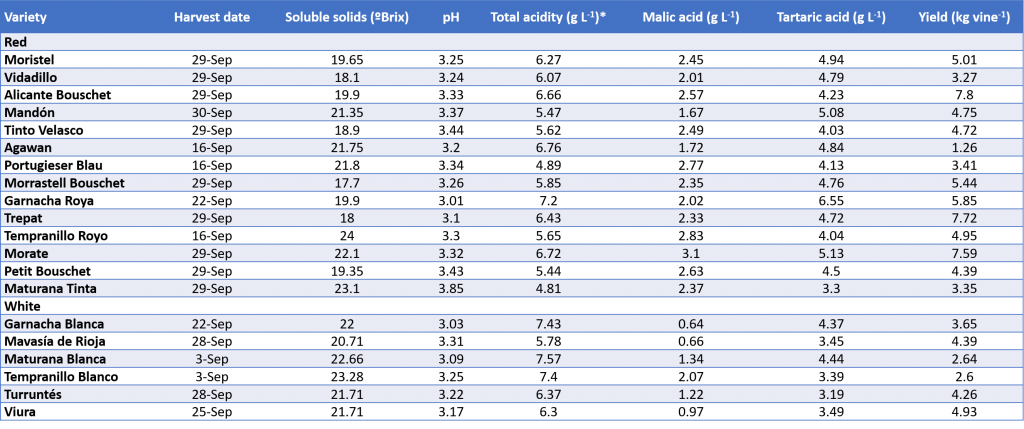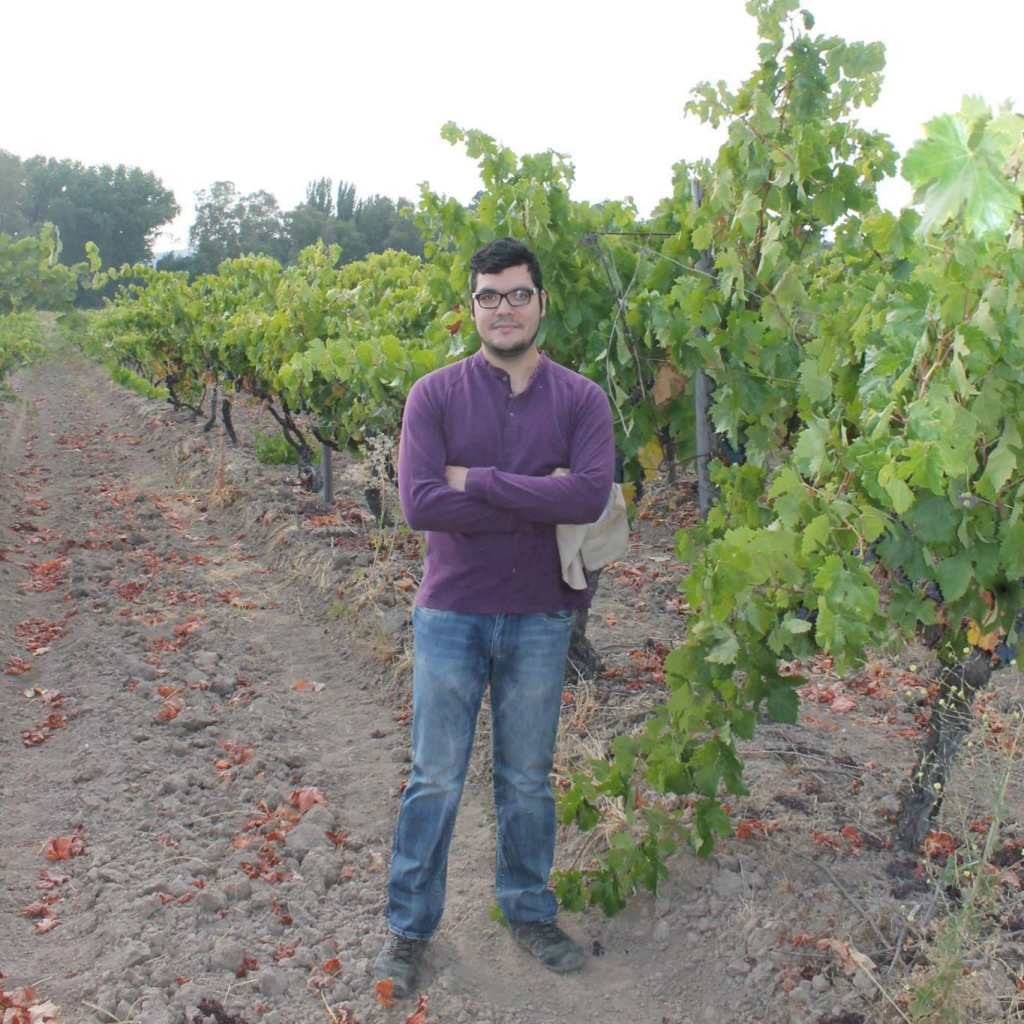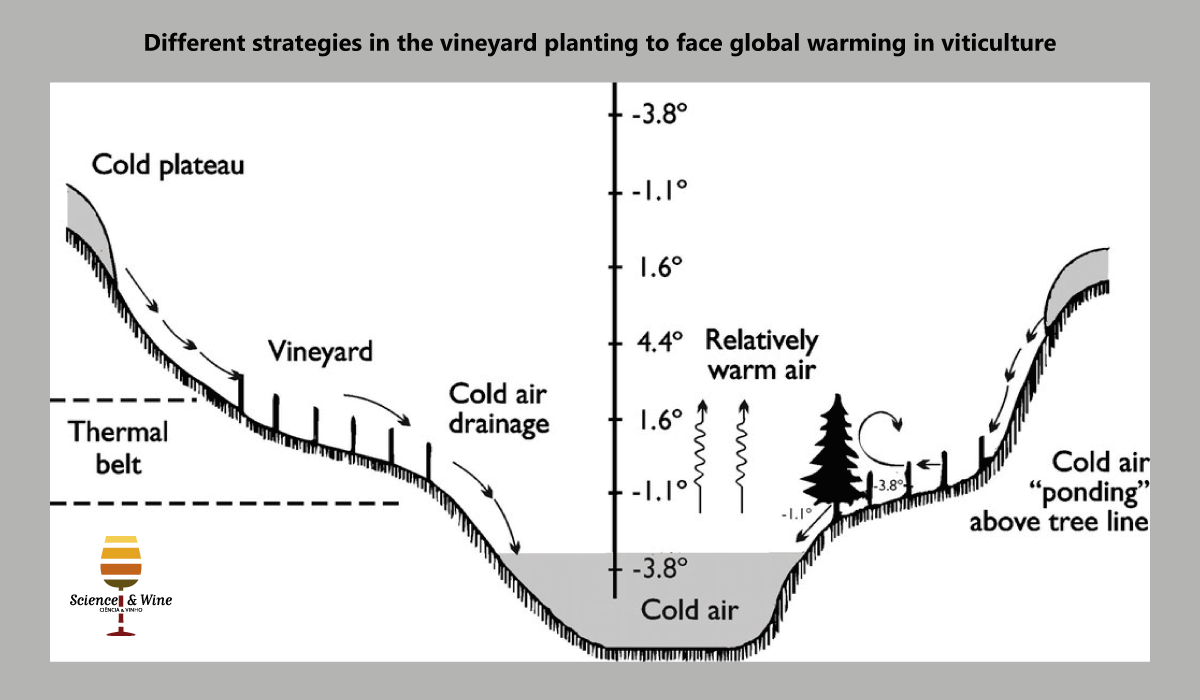By Gastón Gutiérrez Gamboa and Fernando Martínez de Toda
Currently, some technological solutions are developing to mitigate the effects of current global warming in the wine industry. However, most of them act at the oenological level, altering the raw material mostly to reduce the concentration of sugar in the must or of alcohol in the wines. These techniques are intended to offer solutions and respond to new consumer expectations, but they may be considered artificial to be widely accepted by purchasers. In this way, viticultural strategies may offer a naturally solution to obtain grapes with low sugar, and low-alcoholic wines. Bellow we show the viticultural strategies that can be applied in the vineyard planting, such as vineyard altitude, latitude, orientation and slope as well as the selection of rootstock, variety, clone, training system and row orientation and slope with the aim to obtain berries with low sugar content.
Altitude
Altitude allows a considerable daily thermal amplitude due to the low nighttime temperature. Daily thermal amplitude favors the obtention of high-quality grapes for winemaking since the grapes ripen slowly. Grapes obtained from these vineyards are balanced in terms of their soluble solid, acidity, phenolic, nitrogenous and volatile compounds levels. High altitude wines are usually fresh, with a low alcohol degree. This singularity is awakening an incipient interest by the wineries which look high and cool location areas to establish their new vineyards. Altitude is the most effective strategy to delay ripening of the grape and ensure that this ripening takes place at lower temperatures. In general, there are significant differences when comparing different altitudes, being able to establish an average delay in maturation of seven days for every 100 m of elevation.

Latitude
Global warming has also affected the grapevine variety distribution in different viticultural regions. Certain cold regions in the Northern Hemisphere may benefit from global warming since grapevine varieties such as Merlot and Cabernet Franc could be performed at 50 º latitude North. The increase in the average temperature of growing season has provided to the United Kingdom an interesting opportunity for the grapevine cultivation not only for the production of sparkling wines but also for white wines and potentially red wines. However, in cool climate viticultural zones, climate change altered the climate suitability for wine production at regional level, by decreasing climate suitability for white wines and replacing it with climate suitability for red wines. Despite that the effect of latitude is very clear on the thermal conditions of the development of the grapevine, its application in a specific area is practically null because it requires the movement of the vineyards over long distances if we want to reach cooler latitudes.
Slope and orientations
Slope may affect air flow canopy, soil drainage, water movement and erosion, the ease of working among grapevines, mechanization and harvesting feasibility (Figure 1). Flat vineyards are easy to mechanize and to harvest but may be prone to cold air inversions in zones with spring cold frost, whereas 5 to 7.5 % slope allows a good air drainage, nevertheless, increasing erosion and mechanization concerns. The grapevine management becomes more difficult at a vineyard slope greater than 15 % since erosion and equipment rollover can be of great concern. Respect to the vineyard orientation, least favorable expositions to solar radiation should be selected to obtain grapes with low sugar content. Thus, vineyard orientation towards the north if the vineyard is cultivated in the Northern hemisphere. The past it was preferable to select south-facing and low-altitude exposures to achieve the thermal requirements of a given variety, today it might be more appropriate to select vineyard orientation that lead to less solar radiation interception and establish vineyards at higher altitudes.
Rootstocks, varieties and clones
Reductions in berry sugar may be obtained using rootstocks, new varieties, or selecting genotypes capable to maintain stem water potential under warm conditions, as the isohydric grapevine varieties. Rootstocks may influence the grafted scion phenology and drought-tolerant rootstocks are expected to enable the scion to grow, and yield when water supply is limited. Some rootstocks induce earlier phenology and ripening, while other induce a longer cycle, delaying ripening in two and six days.
Between the earliest and the latest maturation grapevine varieties there can be up to two months of difference in the berry ripening. In this way, warm viticultural regions may increase the proportion of late-maturing grapevine varieties. Genetic heterogeneity within grapevine varieties has been explored through clonal selection but, in the twentieth-century wine industry context, plant selection has been made seeking early maturation and high levels of sugar in the grape. Consequently, 21st century clones must be selected based on opposite criteria.
Minority varieties
Minority varieties contain valuable genetic resources and are a very important source of biodiversity that could lead to the development of new wine styles, to achieve better adaptation to the global warming, and to confer resistance to pests and diseases.

Training system, row orientation and row spacing
Gobelet training system allows a particular resistant to drought and high temperature since allows more porous vegetation, with a better ventilation and a homogeneous microclimate. In addition, there is no impediment for the leaves to move under the wind action, constantly changing the incidence angle of solar radiation, adapting to the excessive temperature through paraheliotropy. Training systems determine cluster and vegetation height above the soil and elevations from 45 to 120 cm may reach an average ripening delay of eight days. Vertical shoot position (VSP) trellis system may not dissipate thermal stress as it does gobelet system so great care must be taken in choosing the row orientation. Compared to EW row orientation, grapevine oriented to NS are more sensitive to thermal stress since, in the middle of the afternoon, the west face of the trellis system receives direct solar radiation coinciding with the highest temperatures of all day.
Mitigation strategies when establishing the vineyard as the altitude, latitude, vineyard orientation, varieties, clones, rootstocks and training systems allow to delay grape ripening on certain days when they are applied together or separately. These aforementioned strategies are interesting since they must be decided at the vineyard establishment, so they do not entail additional costs in the annual management of the vineyard and could be classified as preventive viticultural strategies against climate change.

Gastón Gutiérrez Gamboa 
Fernando Martínez de Toda 
Gastón Gutiérrez Gamboa. I am an independent researcher. Ph. D in Enology, Viticulture and Sustainability from Universidad de La Rioja (Logroño, Spain). Master’s degree in Horticulture from Universidad de Talca (Talca, Chile, 2016) and Bachelor’s degree in Agronomy from Universidad de Talca (Talca, Chile, 2014) with studies in oenology and viticulture in l’Ecole Supèrieure d’Agricultures (Angers, France, 2012). My research focus lies on broad areas of viticulture mainly on grapevine production and grape quality. I have been involved as collaborator in different national and international research projects focusing on the impact of terroir and cultural practices on grape and wine quality. Due to this activity I have been able to publish 46 scientific articles (SCI), be a referee for the most important journals related to food chemistry, agriculture and horticulture. I have related technical courses on viticulture and oenology for small producers in the Maule Region, Chile and I have been a viticultural consultant for independent producers. I am part of the National Association of Agricultural Engineers Winemakers of Chile.
FERNANDO MARTÍNEZ DE TODA
Professor of Viticulture
University of La Rioja
Institute of Vine and Wine Sciences
E-mail: fernando.martinezdetoda@unirioja.es
Fernando Martínez de Toda Fernández is, in addition to Viticulturist, Professor of Viticulture at the University of La Rioja and researcher at the Institute of Vine and Wine Sciences. He develops his teaching activity in the Degree in Oenology and Master of the University of La Rioja, with 42 years of teaching experience. His research lines include the preservation and characterization of grapevine germplasm, the study of minority grape varieties and the ecophysiology of the vineyard and the quality of the grape in relation to climate change. He is the author of twenty books, monographs and book chapters on viticulture and more than two hundred scientific and technical works published in the main Spanish and foreign publications in the sector, as well as in conference proceedings. He has received four International Viticulture Awards from the International Office of Vine and Wine (OIV), Paris, in 1986, 1991, 2003 and 2008.
References
- Gutiérrez-Gamboa, G., Zheng, W., Martínez de Toda, F. (2020). Strategies in vineyard establishment to face global warming in viticulture: a mini review. https://doi.org/10.1002/jsfa.10813
- Poling E, B. (2008). Spring cold injury to winegrapes and protection strategies and methods. HortScience 43, 1652–1662.

